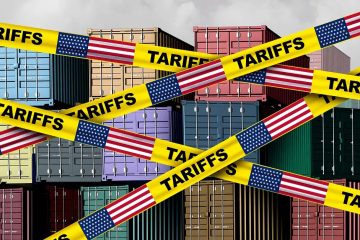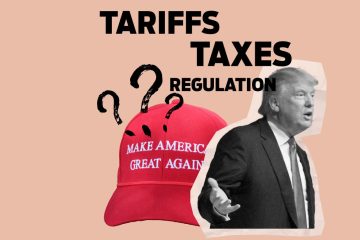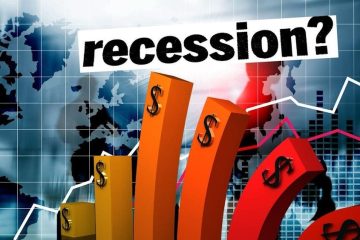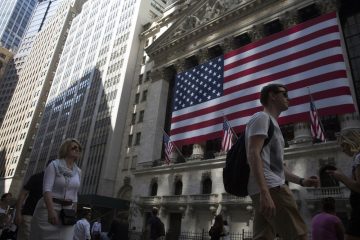2016 Wasn’t as Crazy a Year as Everyone Thinks
Maybe it’s just me but a lot of end-of-year commentary about financial markets in 2016, implicitly and sometimes explicitly, makes it sound as if it was a crazy year. It wasn’t. In fact, it was amazingly normal. This is true of at least the S&P 500 (I’m not going to be more ambitious here) which is what I think many of these commentators are talking about.¹ ²
Annualized daily volatility during 2016 came in at 13.1%. Based on rolling same-length periods going back to 1929 this falls at the 47th percentile.³ You say you don’t want to compare to the craziness of the Great Depression? Maybe that leads to everything else looking calm and you don’t think that’s meaningful. That’s reasonable. Well, that same value of 13.1% is at the 54th percentile since WWII and the 42nd percentile since 1990. Pretty darn normal. Maybe people are comparing to very recent times (I would argue in error) and have been lulled into a false sense of calmness now shattered by 2016? Nope, it’s still only at the 54th percentile when compared to the last five years. Realized daily volatility simply was not high in 2016 compared to pretty much any prior period (it certainly wasn’t exceptionally low either).
Now you say you don’t like quant geek measures like volatility? OK. How about looking at the biggest (up or down so we are talking absolute value) rolling one-month4 return in 2016? That was 10.4% (the bounce back from mid-February to mid-March). How does that compare to history? That is, every year you do this same calculation and look at the biggest up or down move. Well, from 1929 to the present that 10.4% figure for 2016 comes in at the 44th percentile (i.e., 56% of the time the biggest one-month move in a rolling year is bigger than we saw in 2016). Post-war it’s the 51st percentile. From 1990 to present it falls at the 48th percentile. Even over the last five years it’s a whopping 61st percentile. Move on, nothing to see here.
OK, one more. Let’s look at the high over the last year divided by the low of the last year (the full percentage range in prices).5 In 2016 that was 24.2% (the mid-December high divided by the early/mid-February low). Wow, you could’ve made a killing buying at the low! I’m not being snarky here. Actually, yes, you could have. But was that abnormal? You know what’s coming now don’t you … ? Comparing that 24.2% to the same figure calculated each rolling year back to 1929 it comes in at the 42nd percentile. Post-war it’s the 49th percentile. From 1990 to present it’s the 50th percentile. And, over the last five years it’s the 66th percentile. Ok, that last one is getting very marginally high but only very marginally and only over the very recent period, which again I only looked at to see if people were looking at this too short a time horizon in error (yeah, that’s not a great sentence, I know). Really, again, nothing to see here. 6 7
For those who think better graphically, here are each of the three measures presented both as a histogram (with 2016 and some notable years from the latter half of the sample marked) and simply graphed through time (when the relevant comparison is the far right end point of 2016 versus the whole graph):8
1-Year Daily Rolling Volatility (1946-2016)
Histogram

Time Series Plot

Source: AQR and Bloomberg using the S&P 500 index.
Max 1-Month Absolute Return Over Prior Rolling Year (1946-2016)
Histogram

Time Series Plot

Source: AQR and Bloomberg using the S&P 500 index.
Prior 1-Year High Divided By Prior 1-Year Low (1946-2016)
Histogram

Time Series Plot

Source: AQR and Bloomberg using the S&P 500 index.
Not surprising, the pictures send the same message as the percentiles: 2016 isn’t special at all.
OK, admittedly my impression that drove this piece may be wrong. Maybe some bias is making me think a lot of commentators are talking about the 2016 stock market as if it were quite a wild ride when they generally mean something else. If so, sorry about that, but hopefully the above stats are still interesting. But, if I’m right, and you see some similar commentary, tell whoever is congratulating themselves for surviving such a crazy 2016 market that they are mistaken and they just can’t handle the truth. And, this all kind of matters as if you think 2016 was crazy, what are you going to do when something really crazy happens?
Clifford S. Asness is a founder, managing principal and chief investment officer at AQR Capital Management. He is an active researcher and has authored articles on a variety of financial topics for many publications, including The Journal of Portfolio Management, Financial Analysts Journal and The Journal of Finance.









